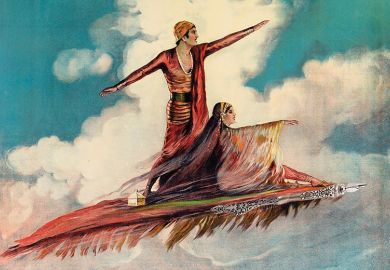With Gore Vidal, Paul Bowles is the last of the great American expatriate writers of the 20th century.
His self-exile results less from a quarrel with his native nation than from the compulsion of an indefatigable nomadism and an habitual traveller's sense of never being a part of any one place.
Many of the most enchanting extracts from the early letters comprise imaginary itineraries of distant places, researched by the young Bowles poring over maps and atlases.
Later these day-dream journeys are replaced by the real thing, and some of the landscape descriptions in letters written from Ceylon and Mexico are an evocative match for his published travel writings.
It is the dual isolation of the restless traveller and the outsider immigre in North Africa that makes correspondence so important to Bowles. At each port-of-call he checks first for his mail; his signings off implore his correspondents for immediate reply; he exhausts local supplies of writing paper. His letter writing acts as a pre-electronic Internet, providing him with remote access to the vital connections of intellectual, cultural and social exchange.
It is through initially unsolicited correspondence that he gets himself invited to Parisian tea-parties with Gertrude Stein, Jean Cocteau and Ezra Pound; and it is through letters that he instigates friendships with William Carlos Williams, Nancy Cunard and Edouard Roditi, who in turn provides him with letters of introduction to Stephen Spender and Christopher Isherwood.
Much later it is correspondence that sustains the mutually influential relationship between Bowles and the Beat writers in California.
Many of the earlier letters provide a forum for his literary experimentation; though never intended for publication, collected together in this way they form a surrogate literary journal of an autodidact. Very early examples demonstrate youthful experimentation in the style of e e cummings; at 20 he reads a Max Ernst novel and immediately follows the experience with his own essay in surrealism in a letter to Roditi.
Earlier still he has experimented with writing under the effects of ether, with fairly predictable results. His subsequent trials with the literary potential of further chemical enhancement of the senses (with hashish and mescaline but never, he's proud to say, with LSD) reveal him to be an attractively pragmatic rebel: "I have found a new candy: hashish almond bar . . . the results do go on for a very long time, however, and one can't rely on its wearing off in time for dinner."
In some of the last letters in the collection Bowles takes pains to rubbish the first attempt at a biography, written by Christopher Sawyer-Laucanno and published in 1989. Jeffrey Miller has already published a comprehensive descriptive bibliography of Bowles's writings and has been collecting the letters for almost 20 years: he is well positioned to take on a full-scale posthumous biography. Indeed the selectivity of the biographical glossary and the annotations which leave a number of intriguing blanks, might suggest that he is saving his material for such an enterprise.
And biographically there remains much to be said, for even through 400 letters Bowles manages to disclose very little in the way of personal detail beyond a mild hypochondria and a minor obsession with his teeth.
This is as Bowles would want it: "The writer is what he has written, and nothing more", he once said. Ultimately the letters point us away from the writer and back to the writing.
Christopher Phipps works at the London Library.
In Touch: The Letters of Peter Bowles
Editor - Jeffrey Miller
ISBN - 0 00 255535 2
Publisher - HarperCollins
Price - £25.00
Pages - 604pp



